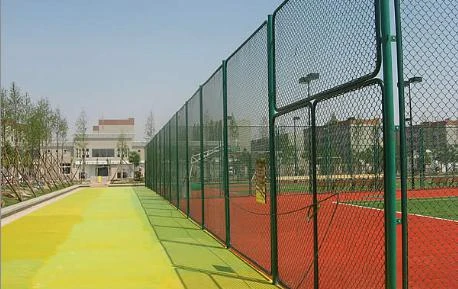 TEL:
+86-13102802206
TEL:
+86-13102802206
 Email:
fencenetting@china.com
Email:
fencenetting@china.com
 Language
Language
 TEL:
+86-13102802206
TEL:
+86-13102802206
 Email:
fencenetting@china.com
Email:
fencenetting@china.com
 Language
Language


Understanding Annealed Iron Wire Properties, Uses, and Benefits
Annealed iron wire is a popular material in various industries due to its unique properties and versatility. The process of annealing involves heating the iron wire to a specific temperature and then allowing it to cool slowly. This treatment enhances the wire's ductility, resilience, and overall strength, making it suitable for a myriad of applications.
What is Annealing?
Annealing is a heat treatment process that alters the physical and sometimes chemical properties of a material to make it more workable. For iron wire, this means increasing its ductility and reducing its hardness. The heat allows for the rearrangement of the metal's crystalline structure, which in turn helps in relieving internal stresses that may have developed during previous processes such as drawing or forging.
Properties of Annealed Iron Wire
1. Ductility One of the standout attributes of annealed iron wire is its excellent ductility. This property allows the metal to be easily drawn into thinner wires without breaking. This is particularly important in applications where flexibility is necessary.
2. Malleability Annealed iron is not only ductile but also malleable, enabling it to be shaped and formed into intricate designs. This property is essential in manufacturing decorative items and other custom products.
3. Strength Despite the increased ductility, annealing also improves the tensile strength of iron wire. This means that while the wire can be stretched and shaped, it can also bear significant loads without snapping.
4. Corrosion Resistance While not as corrosion-resistant as stainless steel, annealed iron wire can be coated or treated to improve its resistance to oxidation, which is a common concern for iron products exposed to moisture.
Applications of Annealed Iron Wire
The diverse properties of annealed iron wire allow it to be used in a wide variety of applications across different sectors

1. Construction In construction, annealed iron wire is commonly used for reinforcing concrete. The wire is woven into shapes to provide added structural integrity to buildings and bridges.
3. Agriculture Farmers frequently use annealed iron wire for fencing, trellises, and supporting plants. Its ability to withstand tension makes it ideal for these applications.
4. Arts and Crafts Many artisans opt for annealed iron wire for jewelry making, sculptures, and other craft projects. Its malleability allows for creative expressions and intricate detailing.
5. Manufacturing Various products in manufacturing, from mechanical springs to small tools, utilize annealed iron wire due to its strength and reliability.
Benefits of Using Annealed Iron Wire
The advantages of annealed iron wire extend beyond its physical properties. Cost-effectiveness is a significant benefit; iron is abundant and relatively inexpensive compared to other metals. The wire can be produced in bulk, allowing for large-scale applications. Additionally, the ease of processing annealed iron wire means that it can be manufactured into various shapes and sizes to meet specific requirements.
Moreover, the environmental impact of using iron should not be overlooked. When recycled properly, iron can be reused in various applications, promoting sustainability. Many industries now focus on sourcing materials that are recyclable, making annealed iron wire an attractive option.
Conclusion
In conclusion, annealed iron wire is a remarkable material with a blend of properties that cater to numerous applications, from construction and agriculture to arts and crafts. Its flexibility, strength, and cost-effectiveness make it an invaluable asset in various industries. As technology and processing methods continue to advance, the future of annealed iron wire is bright, promising even more innovative applications and uses. Whether for practical purposes or artistic creations, annealed iron wire remains a staple in the modern world.